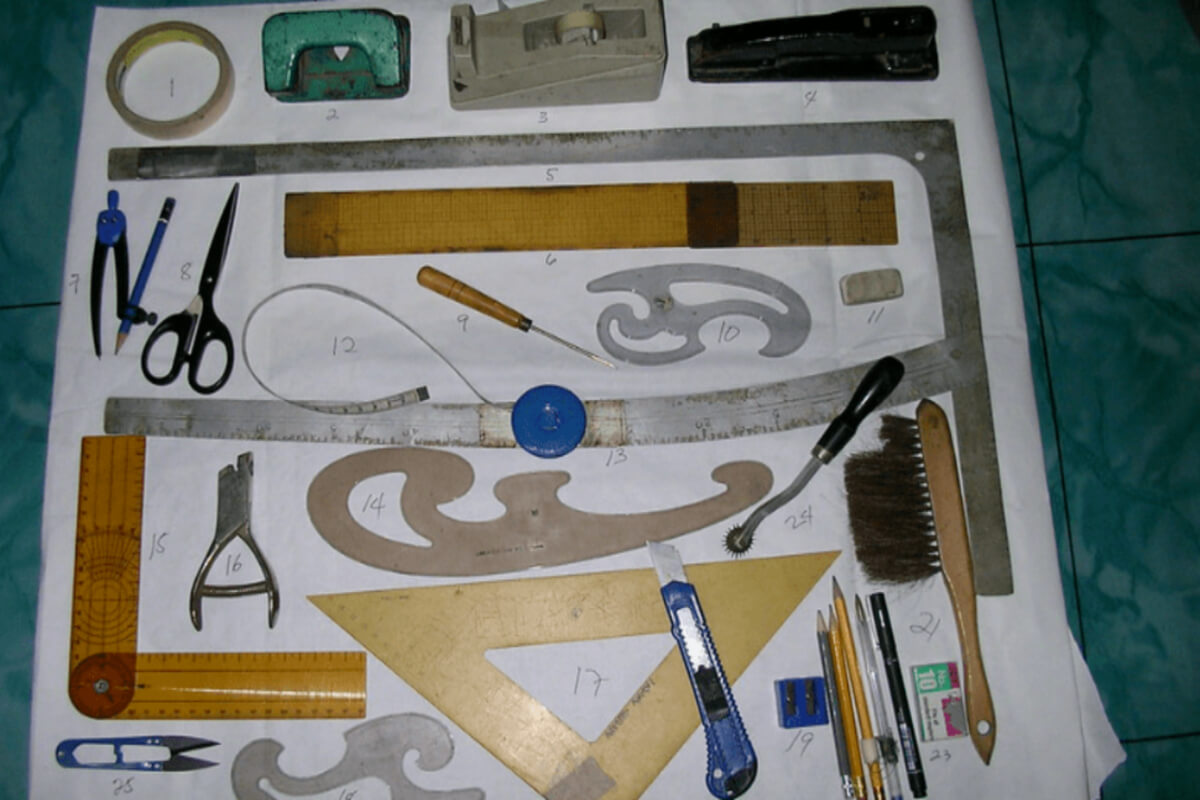Manual garment pattern making is a crucial fashion industry skill requiring precision and expertise. This traditional method involves creating paper patterns based on specific measurements and design specifications to ensure proper fit and construction of garments. Professional pattern makers meticulously draft and manipulate these patterns by hand, utilizing tools such as rulers, French curves, and pencils to translate 2D designs into 3D wearable pieces accurately.
Pattern Making
They must have a deep understanding of garment construction, fabric characteristics, and draping techniques to produce patterns that will ultimately result in well-fitted and aesthetically pleasing clothing. Despite advancements in technology with computer-aided design programs, manual patternmaking remains an essential skill for many fashion designers due to its meticulous attention to detail and ability to customize designs according to individual body shapes and preferences.



Professional pattern makers play a crucial role in the fashion industry, ensuring that each garment is crafted with precision and care. Their expertise allows them to create unique and tailored pieces that cater to the diverse needs and preferences of their clients. By combining traditional techniques with modern technology, these skilled artisans bring creativity and innovation to the world of fashion.
Garment Pattern Maker
If you intend to be a successful garment pattern maker and you think need a college degree. Then the assumption is wrong. You don’t need to be a college degree holder to become a successful pattern maker. Many undergraduates in high school can do this job perfectly. This job only required a simple knowledge of math, division, addition, and subtraction. The basic standard thought in elementary grade.



To begin with, make yourself familiar with basic tools and the rest will become simple. Another thing is to apply common sense. Good judgment and find a better solution when you meet a problem.
Also Read: How To Start A Home Dressmaking Business
Here are the Basic Tools:
Rule of the Patternmaking System
- Complete sets of measurement specifications of the base sample, trims, accessories, and special instructions.
- Cutting Table – Plain smooth for draping
- Pattern Paper – use for first draping
- Hard paper – use for transferring paper pattern for marker making, Use finished pattern/sewing guide
- Tape – Used to hold a paper edge,
- Puncher- Used to make a hole for tying
- Tape dispenser – Holder of tape to roll smooth.
- Stapler- Use for joining patterns, papers, etc.
- Tailor square – Used to make straight lines, Shortcut for measuring 1/8 inch., 1/4 inch., 1/2 inch., and 3/4inch.
- Grade Rule- Many uses, straight lines, creating seam allowance, grading by 1/8inch., 1/4inch., 3/8inch., 1/2inch., 5/8inch.,3/4inch., 7/8inch. and 1inch.
- Compass Ruler- Use for making a circle, but the most important is to mark the seam allowance.
- Scissors- used to cut paper and any other light materials.
- Pierce small holes, sharp-pointed – Used to transfer points below the pattern, especially for tracing paper pattern
- French curve – Different sizes for the different curves, most used in armhole, and neck.
- Eraser – Pencil error remover
- Tape Measure- Used to measure numbers and centimeters.
- Tailor’s curve – Used to make a figure in the waistline, hips, thigh, bottom, and sleeves.
- Adjustable Ruler – used to measure with exact results of numbers
- Notcher – This one is used for the hard paper to create a sign as a joint or symbols
- Triangle Ruler- You are assured of a reliable balance of vertical and horizontal straight lines.
- Pencil Sharpener –The name itself
- Pencils/marker pen/Technical pen 0.5 – for marking, creating lines, tracing lines, writing, etc.
- Dust brush – remove dust on your table.
- Trace wheel – tools to trace the pattern with many pointed sharp ends in the shape wheel.
- Wire staples – A set of staplers.
Pattern Maker Tools
Sewing Patterns & Fashion Styles
The above list covers only a part of many tools used in pattern making. Many skilled garment makers used only the least of the tools listed. A tape measure, grading ruler, pencil, eraser, scissor, cutter, triangle ruler, notcher, and hole puncher. A set of the stapler, papers, tables, and measurement specs.
➡ Men Shirt Block Pattern Making: Body Measurement Explained
Garments Pattern Maker


Leave a Reply